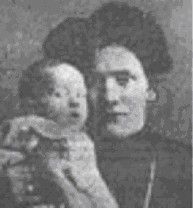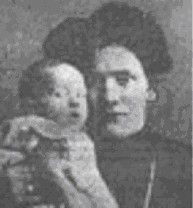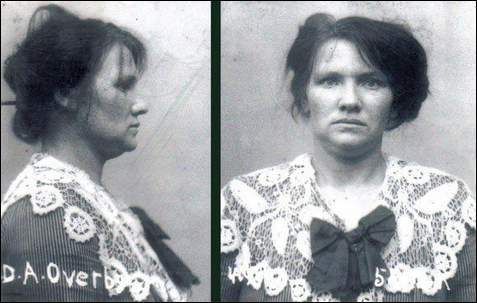Characteristics: Professional child caretaker
Number of victims: 9 - 25
Date of murder: 1913 - 1920
Date of arrest: September 12, 1920
Date of birth: April 23, 1887
Victim profile: Children (of which one was her own)
Method of murder: She strangled them, drowned them or burned them to death
Location: Nørrebro, Copenhagen, Denmark
Status: Sentenced to death on March 3, 1921. Commuted to life in prison on May 25, 1921. Died in prison on May 6, 1929
Dagmar Johanne Amalie Overbye (April 23, 1887 – May 6, 1929) was a Danish serial killer. She murdered 25 children – of which one was her own – during a seven-year period from 1913 to 1920. On March 3, 1921, she was sentenced to death in one of the most talked about trials in Danish history, that changed legislation on childcare. The sentence was later commuted to life in prison.
Overbye was working as a professional child caretaker, caring for babies born outside of marriage, murdering her own charges. She strangled them, drowned them or burned them to death in her masonry heater. The corpses were either cremated, buried or hidden in the loft.
Overbye was convicted of nine murders, as there were no proof of the others. Her lawyer based the case on Overbye being abused herself as a baby, but that did not impress the judge. She became one of the three women sentenced to death in Denmark in the 20th century, but she – like the other two – was reprieved.
She died in prison on May 6, 1929, at age 42. Notes relating to her case are included in the Politihistorisk Museum (Museum of Police History) in Nørrebro, Copenhagen.
The Danish author Karen Søndergaard Jensen wrote a fiction novel called Englemagersken (The Angel Maker) based on her. Teatret ved Sorte Hest in Copenhagen has performed a play named Historien om en Mo(r)der (Morder meaning "murderer" and moder meaning "mother") based on her life.
Characteristics: Professional child caretaker
Number of victims: 9 - 25
Date of murder: 1913 - 1920
Date of arrest: September 12, 1920
Date of birth: April 23, 1887
Victim profile: Children (of which one was her own)
Method of murder: She strangled them, drowned them or burned them to death
Location: Nørrebro, Copenhagen, Denmark
Status: Sentenced to death on March 3, 1921. Commuted to life in prison on May 25, 1921. Died in prison on May 6, 1929
Dagmar Johanne Amalie Overbye (April 23, 1887 – May 6, 1929) was a Danish serial killer. She murdered 25 children – of which one was her own – during a seven-year period from 1913 to 1920. On March 3, 1921, she was sentenced to death in one of the most talked about trials in Danish history, that changed legislation on childcare. The sentence was later commuted to life in prison.
Overbye was working as a professional child caretaker, caring for babies born outside of marriage, murdering her own charges. She strangled them, drowned them or burned them to death in her masonry heater. The corpses were either cremated, buried or hidden in the loft.
Overbye was convicted of nine murders, as there were no proof of the others. Her lawyer based the case on Overbye being abused herself as a baby, but that did not impress the judge. She became one of the three women sentenced to death in Denmark in the 20th century, but she – like the other two – was reprieved.
She died in prison on May 6, 1929, at age 42. Notes relating to her case are included in the Politihistorisk Museum (Museum of Police History) in Nørrebro, Copenhagen.
The Danish author Karen Søndergaard Jensen wrote a fiction novel called Englemagersken (The Angel Maker) based on her. Teatret ved Sorte Hest in Copenhagen has performed a play named Historien om en Mo(r)der (Morder meaning "murderer" and moder meaning "mother") based on her life.
Sponsored by Ancestry
Advertisement
Records on Ancestry
Sponsored by Ancestry
Advertisement




